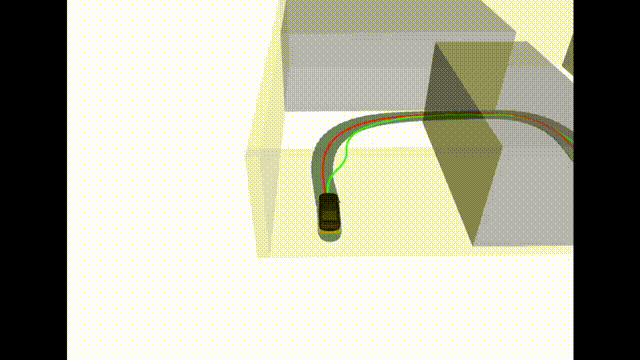Safe and efficient trajectory optimization for autonomous vehicles using b-spline with incremental path flattening.
 Trajectory Optimization
Trajectory OptimizationB-spline-based trajectory optimization is widely used for robot navigation due to its computational efficiency and convex-hull property (ensures dynamic feasibility), especially as quadrotors, which have circular body shapes (enable efficient movement) and freedom to move each axis (enables convex-hull property utilization). However, using the B-spline curve for trajectory optimization is challenging for autonomous vehicles (AVs) because of their vehicle kinodynamics (rectangular body shapes and constraints to move each axis). In this study, we propose a novel trajectory optimization approach for AVs to circumvent this difficulty using an incremental path flattening (IPF), a disc type swept volume (SV) estimation method, and kinodynamic feasibility constraints. IPF is a new method that can find a collision-free path for AVs by flattening path and reducing SV using iteratively increasing curvature penalty around vehicle collision points. Additionally, we develop a disc type SV estimation method to reduce SV over-approximation and enable AVs to pass through a narrow corridor efficiently. Furthermore, a clamped B-spline curvature constraint, which simplifies a B-spline curvature constraint, is added to dynamical feasibility constraints (e.g., velocity and acceleration) for obtaining the kinodynamic feasibility constraints. Our experimental results demonstrate that our method outperforms state-of-the-art baselines in various simulated environments. We also conducted a real-world experiment using an AV, and our results validate the simulated tracking performance of the proposed approach.